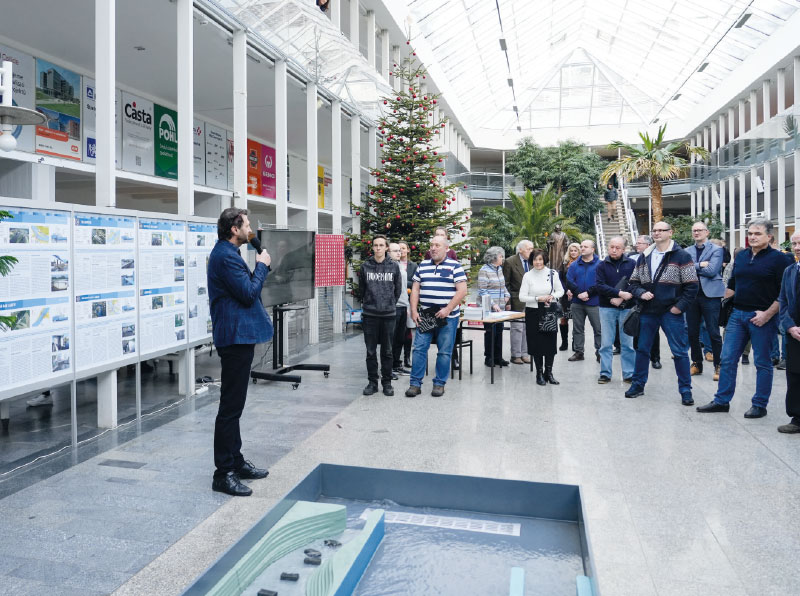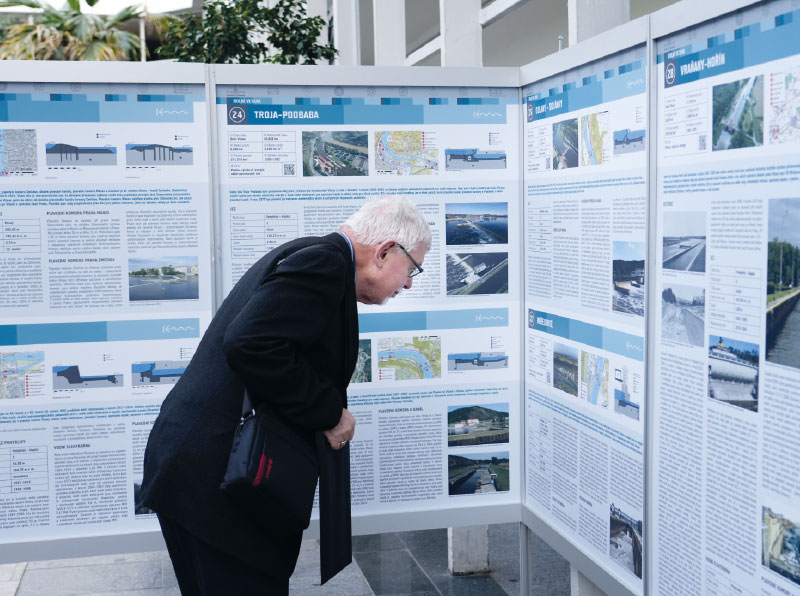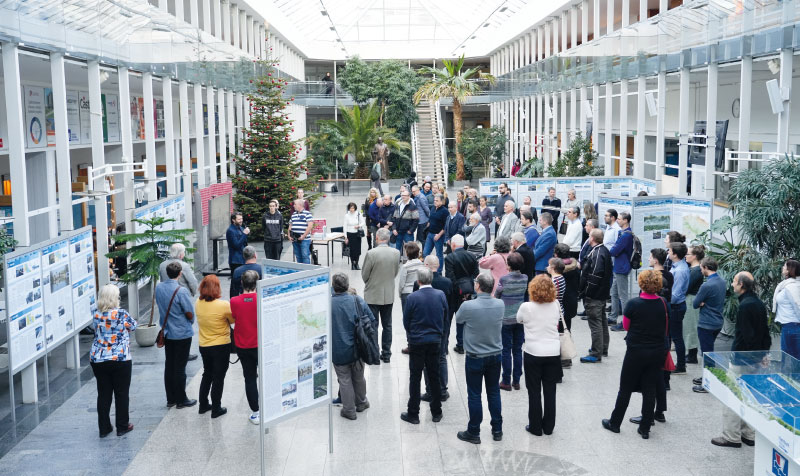
From 8th November 2022 to 31st January 2023, an exhibition entitled “Technical Heritage of the Elbe-Vltava Waterway” took place in the atrium of the Faculty of Civil Engineering of the Czech Technical University in Prague (CTU). The exhibition included exhibition panels, an interactive model of a weir lock, a video projection screen, and a stand with a web application www.lvvc.cz. The exhibition mapped the history and development of this 324 km waterway since the beginning of the 19th century, and it is expected to continue as a travelling exhibition.
The exhibition was created under the guidance of doc. Dr. Ing. Pavel Fošumpaur from the Faculty of Civil Engineering of CTU, Department of Hydraulic Structures, as part of the project “Documentation and presentation of technical cultural heritage on the Elbe-Vltava Waterway” administered by the programme of the Ministry of Culture to support applied research and experimental development of national and cultural identity 2016–2022 (NAKI II).
The purpose of the exhibition “Technical Heritage of the Elbe-Vltava Waterway” is to acquaint visitors with the history and development of the Elbe-Vltava waterway (LVVC). It focuses on the modern history of LVVC modifications since the beginning of the 19th century, when navigation of the Vltava and Elbe rivers was achieved first through regulations. From the end of the 19th century, the implementation of canalization was started with the construction of a continuous cascade of locks. Canalization was decided by the issuance of Imperial Water Act No. 93 of 1869. A systematic approach to the regulation of watercourses and an emphasis on their multi-purpose nature was only put in place in 1896, when the Commission for canalization of the Vltava and Elbe rivers in Bohemia was established. The regulation programme was subsequently laid out in the framework of the Land Waterways Act of 1901. Between 1899 and 1905, the lower Vltava was canalized to Mělník through construction of a cascade of locks. The Vltava in Prague was canalized between 1907 and 1913. The section of the Elbe from Mělník to Lovosice was canalized between 1907 and 1919, and Střekov lock was completed in 1936. The cascade of locks on the middle Elbe was put into operation according to the importance of floodplain protection. Most of the water structures were completed by the middle of the 20th century. A number of historical buildings on the LVVC are classified as important cultural heritage.
The result of these efforts is the Elbe-Vltava Waterway as we know it today. Thanks to the technical erudition of our ancestors, a set of 34 unique water structures was created, which still serve their purpose today. The exhibition documents the Vltava waterway from the Slapy dam to Mělník and the Elbe waterway from Pardubice to the state border with Germany. Although the principal purpose is to ensure navigational conditions on this waterway, according to the original plans, the set of buildings still serves many other purposes, such as flood protection, water supply, use of renewable water energy, and recreation. A number of buildings on the LVVC are part of the national property cultural heritage fund, and some buildings have the status of cultural monuments. The aim of the exhibition is to draw attention to the existence of this extraordinary set of water structures with a unique history and societal significance as well as to deepen interest in technical education, which has a long tradition in our country.
A catalogue was published for the exhibition presenting documented information about locks on the LVVC and its historical development, as well as the main results of the project. The catalogue is also available in an electronic version on the project website. In addition to locks, public ports are also presented in more detail, whose creation is closely related to transport infrastructure development. One of the project’s outputs is also a map with specialized content, presenting historical regulations on the lower Elbe below Střekov in Ústí nad Labem up to the state border with Germany. Attention is also paid to special topics, such as the multi-purpose nature of individual buildings, personalities connected with the development of the waterway, the latest modernizations implemented, and hydropower utilization. The exhibition was supplemented with an interactive model of a lock with a weir, a chamber, a power station, a canoe slalom channel, a model of the planned Děčín barrage, a stand with a web application, and a large screen with a video projection of the spatio-temporal development of the LVVC.
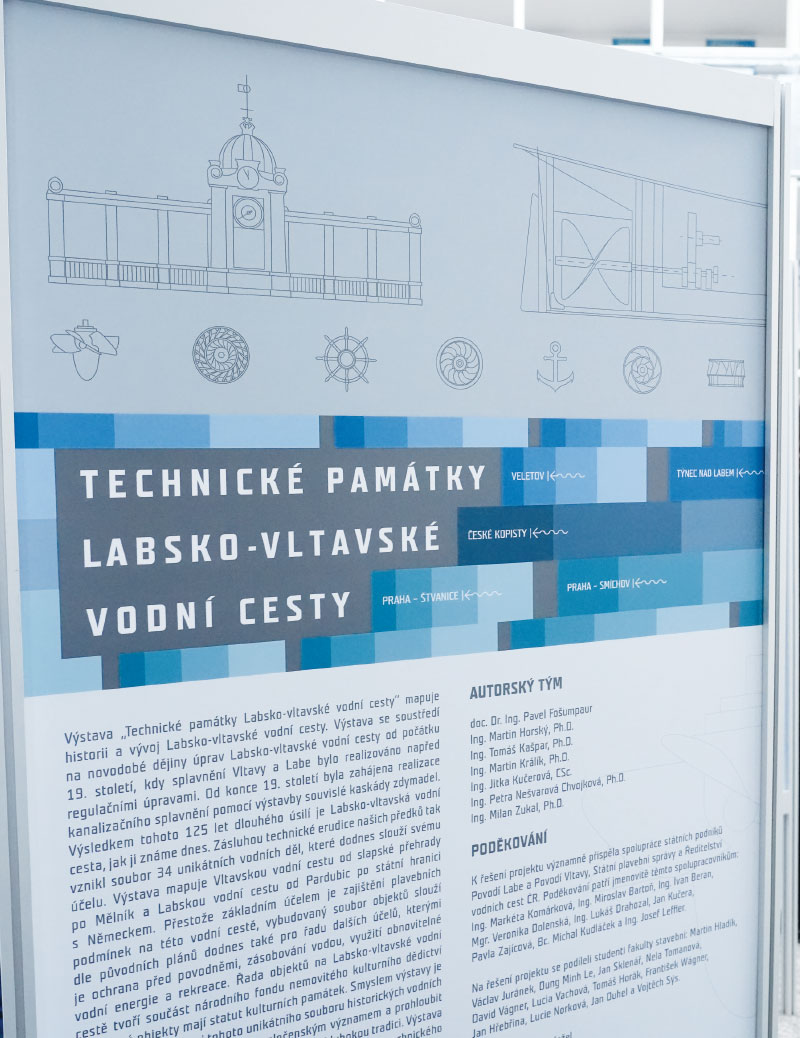
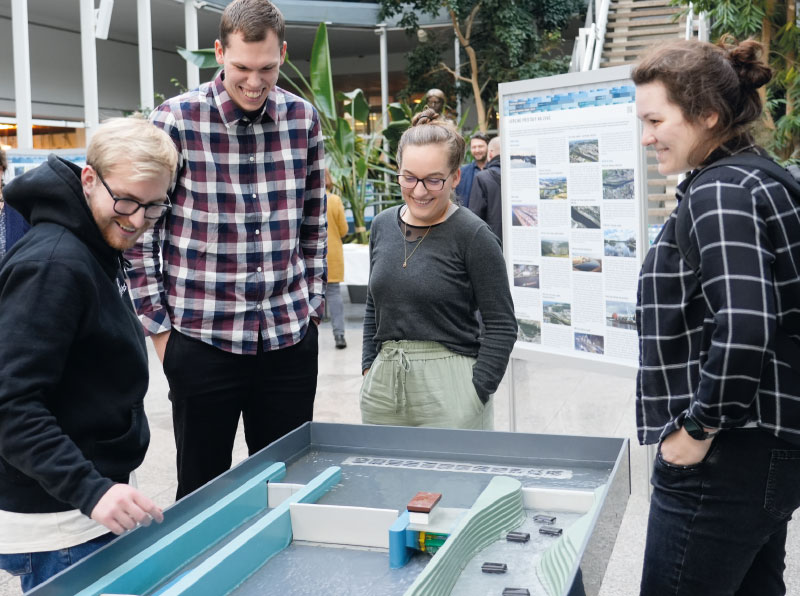
Photo: M. Sedláček
The project also includes the web application “Technical Heritage of the Elbe-‑Vltava Waterway”, which was introduced in 2020. The application documents the existing technical historical objects on this waterway and their construction and technological elements and makes them available to the public. It also offers tips on tourist attractions in the vicinity of the rivers, and in animation it presents the temporal development of modern modifications of the waterway from the end of the 19th century to the present day. It is also equipped with a glossary of technical terms, and history enthusiasts can find a number of digitized historical documents, maps and drawings. The application is available at https://www.lvvc.cz/.
This informative article has not been peer-reviewed.
